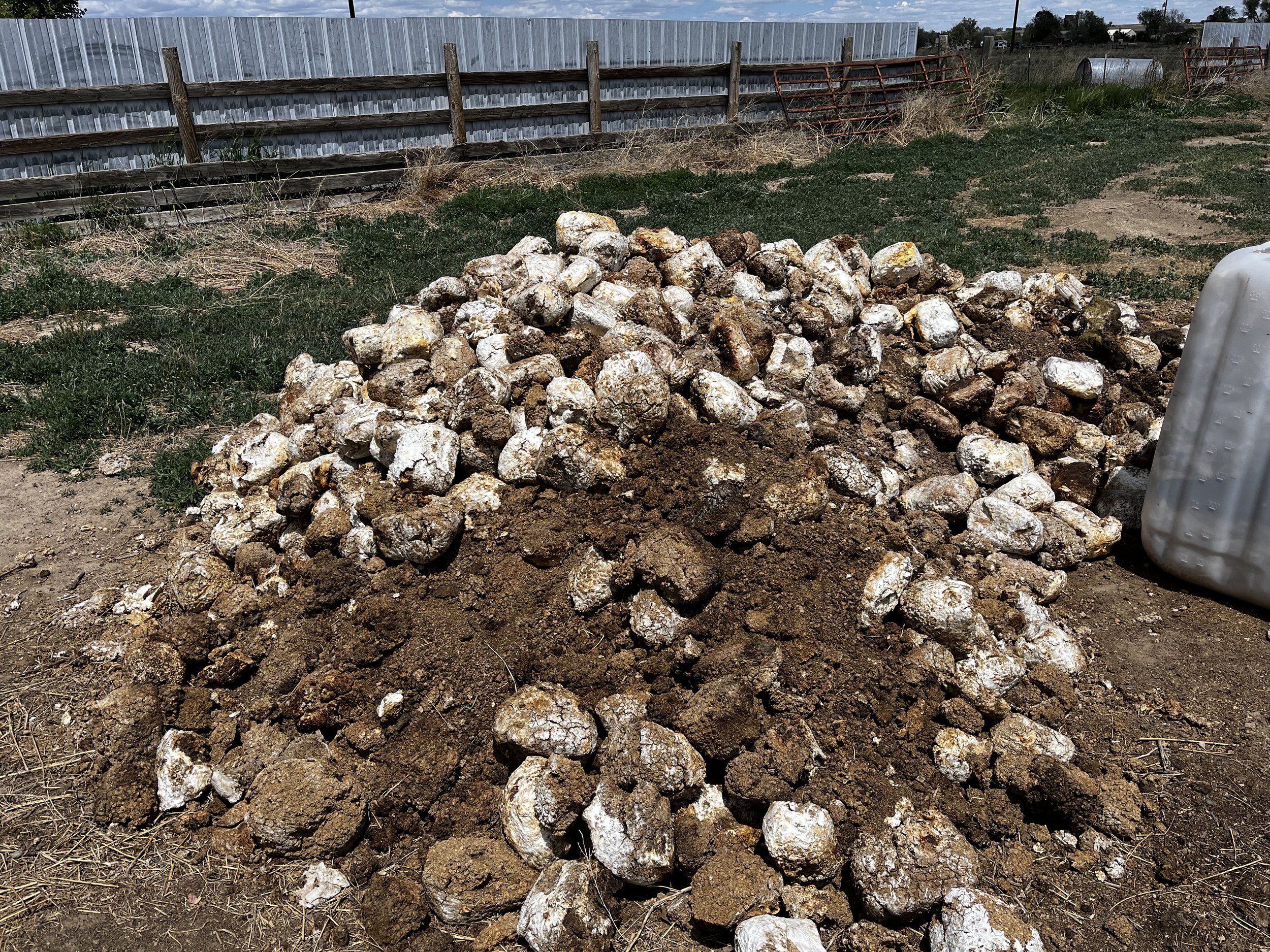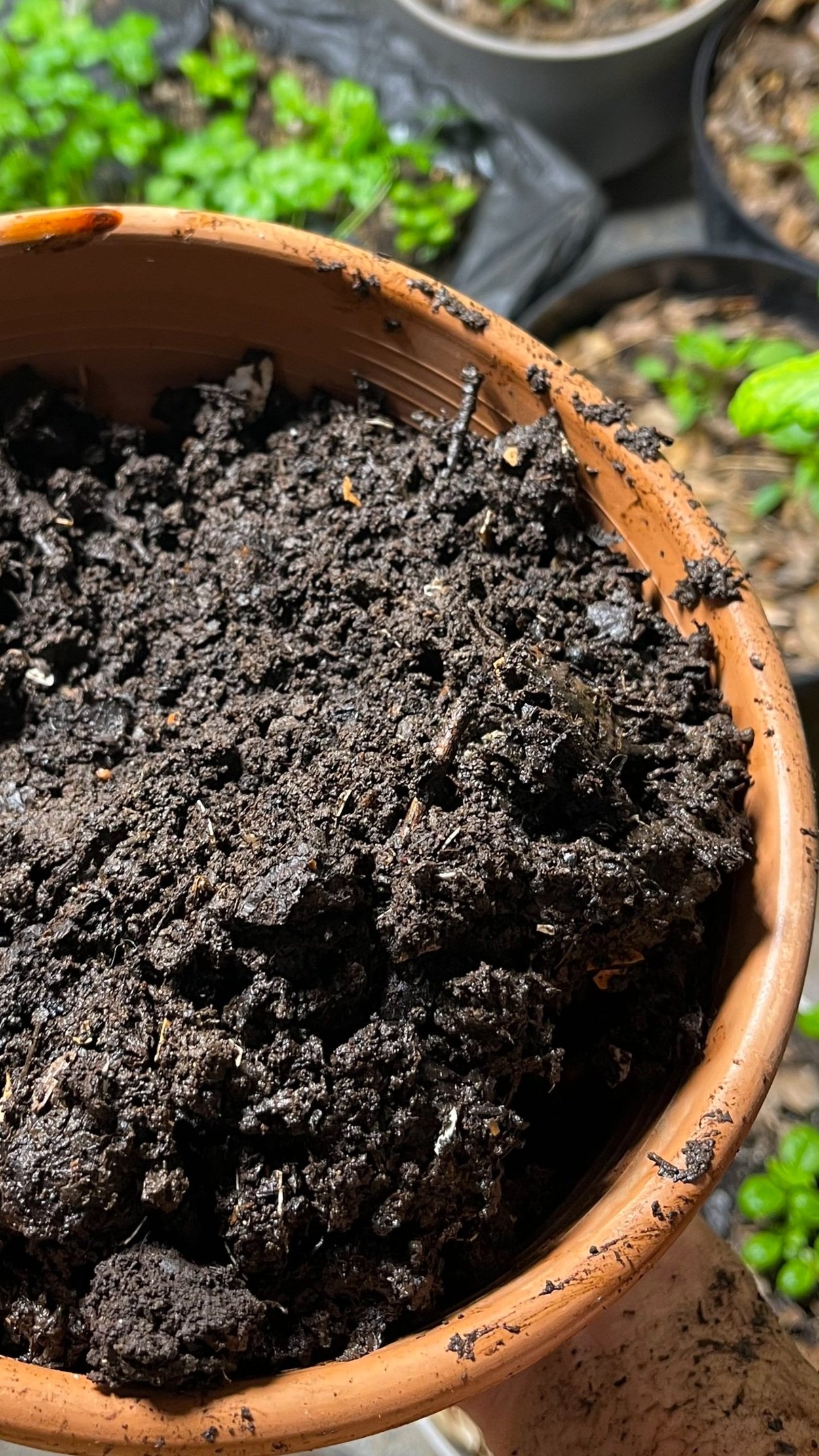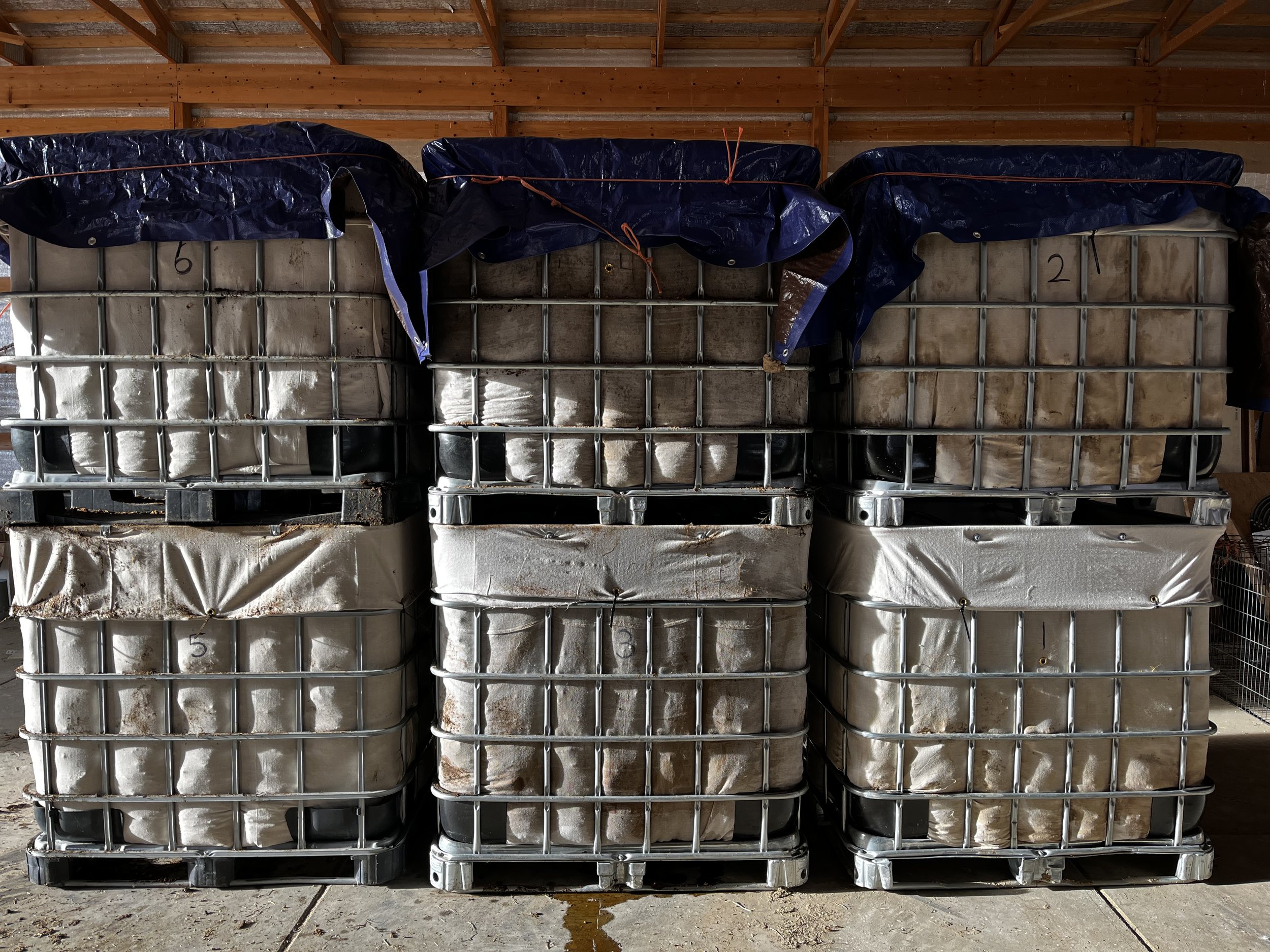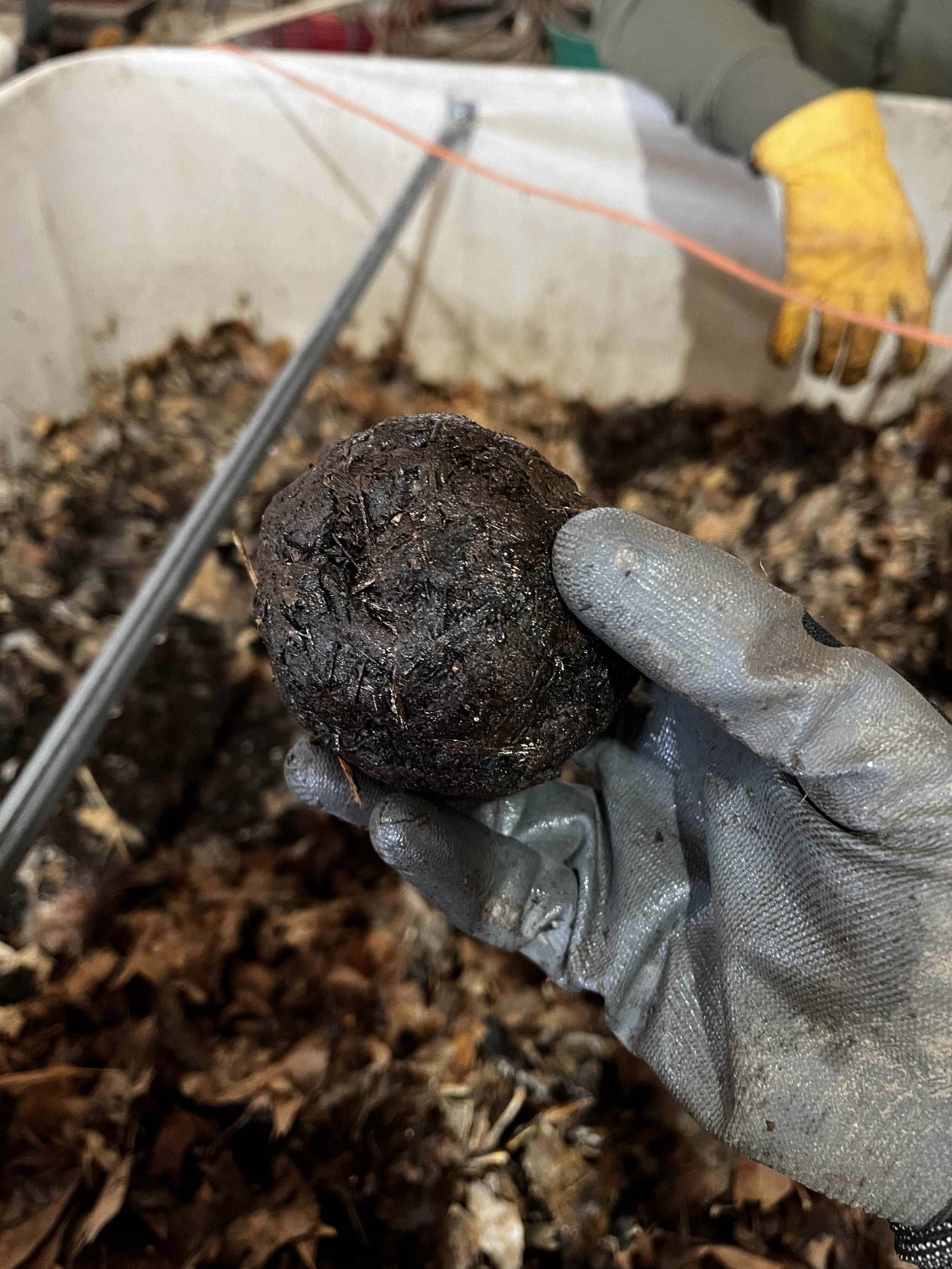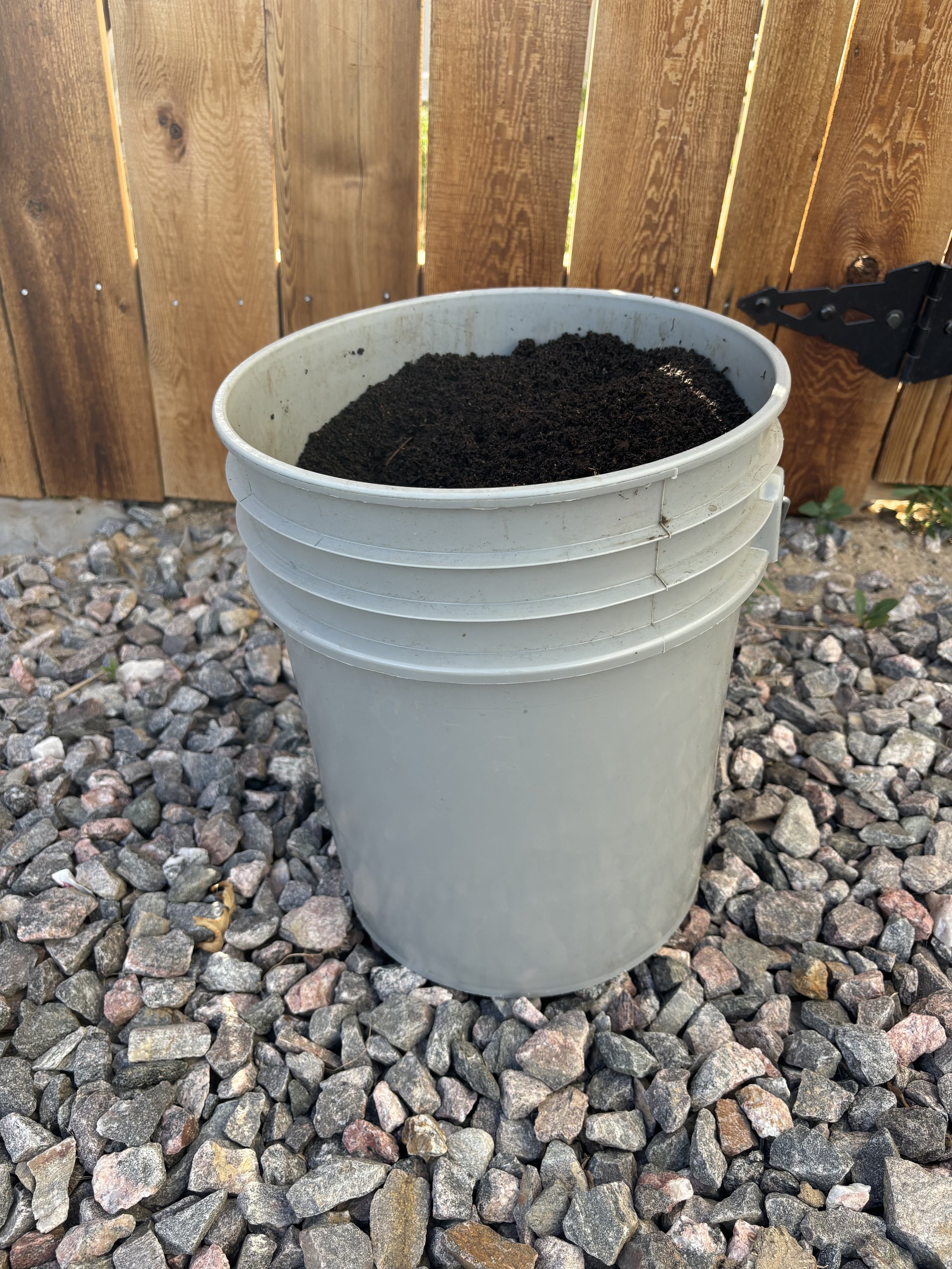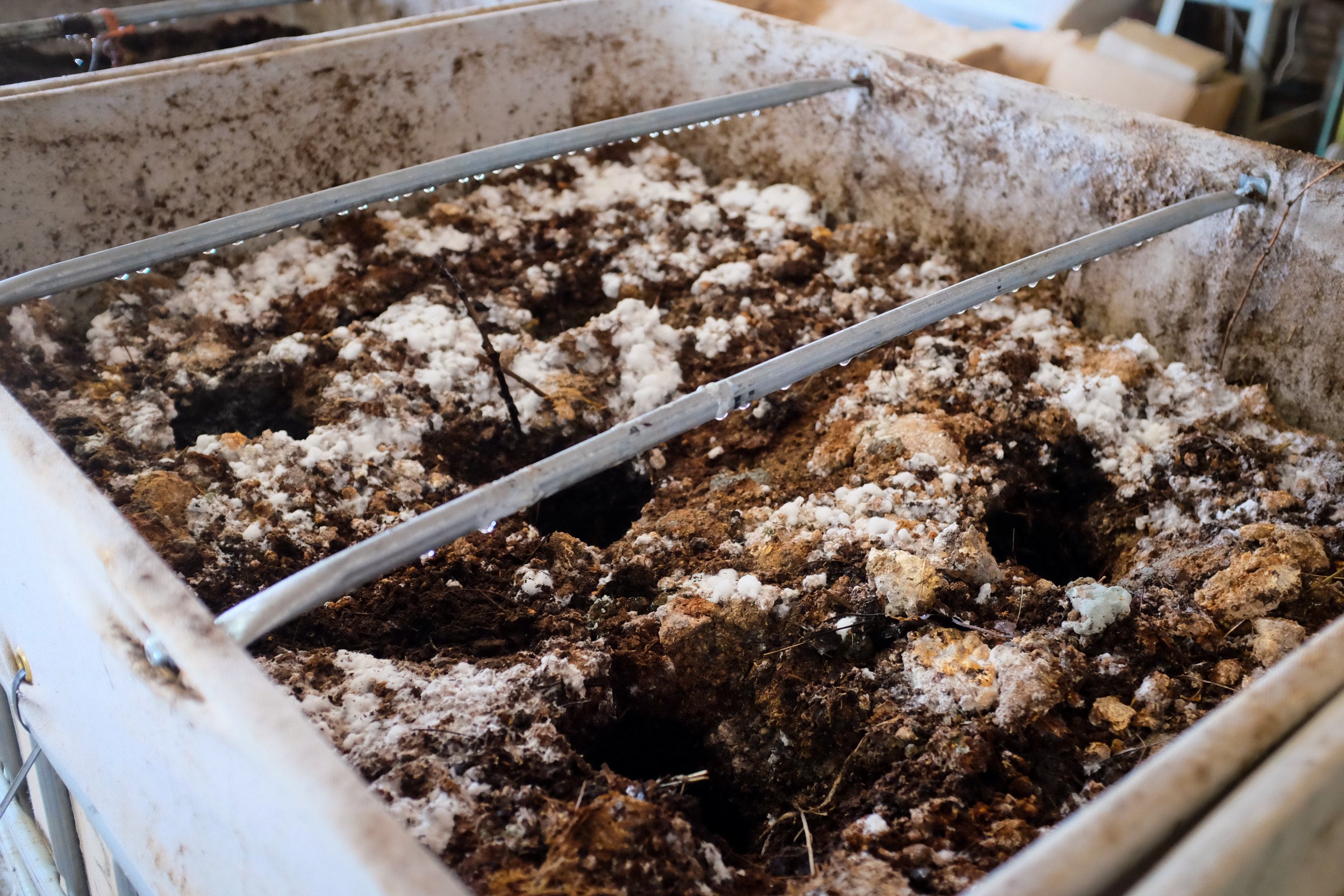our process
We combine our inputs- browns + greens, and let them COOK. The microbes get excited, eat whats around them, and produce HEAT. Our bioreactors get to around 130-160F between 3-10 days, and then drop back down 80F and below. This kills off pathogens and all the bad guys, but sets the stage for all the right biology to thrive.
BROWNS
spent mushroom blocks
leaves
wood chips
…
GREENS
grass clippings
manure
spent brewers grain
…
bioreactor
static pile
passively aerated
moisture controlled
…
applied to soil
Once the temperatures are safe enough, we add worms to the mix and let them go to WORK. The worms and fungi continue to decompose the material. The bioreactor stays aerobic, and at about 70% water saturation. In these conditions we let the system SIT and over time mature into a fungal-dominant vermicompost product.
When the material is ready, we either provide the compost as is- or we wash the microbes off the compost and produce an extract. This allows us to spread all that biology far and wide. One IBC tote of extract can produce benefits across 14 acres of land. The best times to apply are alongside planting. This gives the microbes something to eat and thrive. We can also produce teas upon request.
Lets Dig Deeper
Johnson-Su compost, a high-quality, fungal-dominant compost, offers several benefits specifically tailored to the soil conditions on the Front Range in Colorado. Here are the key advantages:
Improved Soil Structure and Water Retention
Enhanced Soil Structure: The fungal dominance of Johnson-Su compost helps create soil aggregates, improving soil structure. This is particularly beneficial for the clay-heavy soils typical of the Front Range, making them more friable and easier to work with.
Increased Water Retention: Improved soil structure leads to better water infiltration and retention. This is crucial in the semi-arid climate of Colorado, where water conservation is essential.
Nutrient Availability and Soil Fertility
Higher Nutrient Availability: The compost is rich in humic substances that improve nutrient availability for plants. This is especially beneficial for the nutrient-poor, often alkaline soils found in the region.
Enhanced Soil Fertility: Johnson-Su compost introduces a diverse microbial population that contributes to nutrient cycling, thus increasing the overall fertility of the soil.
Reduced Soil Erosion
Erosion Control: By improving soil structure and increasing organic matter content, the compost helps reduce soil erosion, which is a significant issue on the windy plains of the Front Range.
Sustainable Agriculture
Reduced Need for Chemical Inputs: With improved soil health and fertility, there is less reliance on chemical fertilizers and pesticides, promoting more sustainable agricultural practices.
Carbon Sequestration: The high organic matter content helps sequester carbon in the soil, contributing to climate change mitigation efforts.
Enhanced Plant Health and Yield
Improved Plant Health: The beneficial microbes in Johnson-Su compost can help suppress soil-borne diseases and promote healthier root systems, leading to more robust plant growth.
Increased Crop Yields: With better soil health and nutrient availability, crops tend to yield more, which is advantageous for local farmers and gardeners.
Local Adaptation
Adaptation to Local Conditions: Johnson-Su compost can be tailored to local conditions by using locally sourced organic materials, ensuring it addresses the specific needs of the Front Range soil.
By incorporating Johnson-Su compost into the soil management practices on the Front Range, local farmers, gardeners, and landscapers can significantly improve soil health, water efficiency, and crop productivity while promoting sustainability and environmental stewardship.
Sources:
Regeneration International. (2017). Johnson-Su Bioreactor. Retrieved from https://regenerationinternational.org/bioreactor/
NM Healthy Soil Working Group. (n.d.). Johnson-Su Bioreactor – NM Healthy Soil Working Group. Retrieved from https://www.nmhealthysoil.org/
Project Regeneration. (n.d.). Compost | Project Regeneration. Retrieved from https://regeneration.org
Land Stewardship Project. (2023). Getting a Bio-Reaction from Soil. Retrieved from https://landstewardshipproject.org
lEARN MORE

